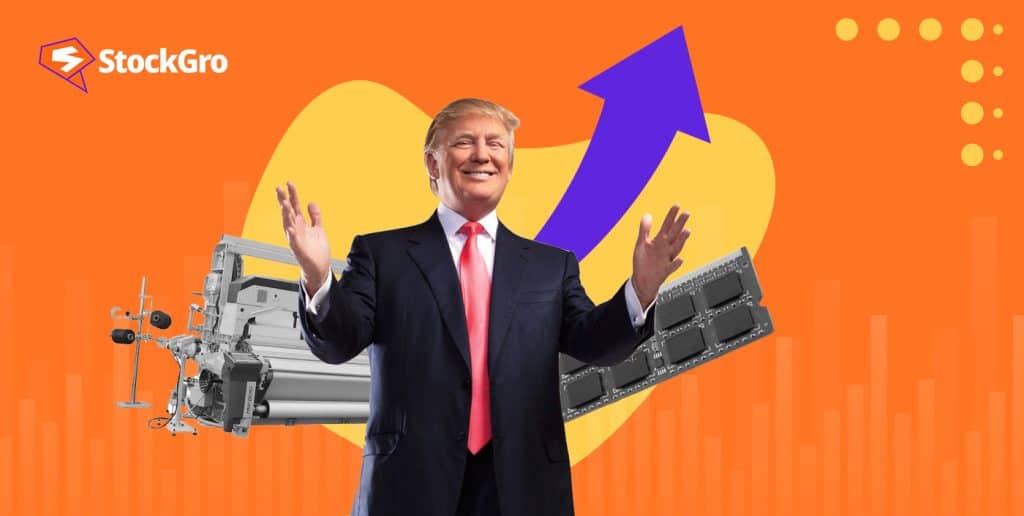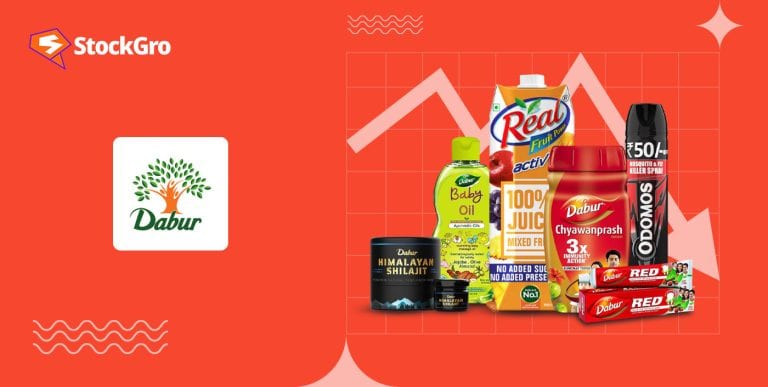
In a bold move, US President Donald Trump has introduced a 27% reciprocal tariff on imports from India. While this decision could potentially disrupt several key Indian industries, some sectors are poised to gain advantages amid the shifting global trade landscape. Let’s break down how different industries will be affected and explore who wins and who loses.
What does India export and import from the US?
India exports a wide range of products to the US, including pharmaceuticals, telecom equipment, gemstones, petroleum products, gold jewellery, and ready-made garments. On the other side, India imports key commodities from the US, such as crude oil, coal, petroleum products, electric machinery, and aerospace components.
You may also like: Pharma stocks drop on US tariff concerns
| Export Sector | Primary Products | Export Value (FY24) |
| Pharmaceuticals | Drug formulations and biologicals | $8.1 billion |
| Telecom Instruments | Telecommunications equipment | $6.5 billion |
| Gemstones | Precious and semi-precious stones | $5.3 billion |
| Petroleum Products | Petroleum oils (excluding crude) | $4.1 billion |
| Gold Jewellery | Precious metal jewellery | $3.2 billion |
| Ready-Made Garments | Cotton garments and accessories | $2.8 billion |
India also imports several key products from the US:
| Import Sector | Primary Products | Import Value (FY24) |
| Crude Oil | Crude petroleum | $4.5 billion |
| Petroleum Products | Petroleum products | $3.6 billion |
| Coal and Coke | Coal and coke | $3.4 billion |
| Diamonds | Cut and polished diamonds | $2.6 billion |
| Electric Machinery | Electric machinery | $1.4 billion |
| Aircraft and Spacecraft | Aircraft and spacecraft components | $1.3 billion |
Hardest-hit Indian sectors
The industries most vulnerable to the 27% tariff include electronics and gems and jewellery. The US imports approximately $14 billion worth of electronics and over $9 billion worth of gems and jewellery from India, making these sectors particularly exposed to the tariff hike. Let’s see the impact in more detail:
| Sector | Previous Tariff | New Tariff | Export Value (FY24) |
| Electronics | 0.41% | 27% | $14 billion |
| Gems & Jewellery | 2.12% | 27% | $9 billion |
| Auto Parts & Aluminium | 25% (previous) | 25% | N/A |
| Pharmaceuticals | Exempt | Exempt | $8 billion |
| Energy Products | Exempt | Exempt | N/A |
Sectors exempt from Trump’s tariffs
While many Indian sectors face higher duties, some key industries have been exempted from the 27% tariff, providing them with a significant advantage. These include pharmaceuticals, semiconductors, copper, and energy products. Below is a list of exempted products:
| Exempted Sector | Products Exempted | Impact |
| Pharmaceuticals | Drug formulations and biologicals | No impact; exports continue to flow |
| Semiconductors | Semiconductors | No impact; exports continue to flow |
| Copper | Copper | No impact; exports continue to flow |
| Energy Products | Petroleum oils, coal, natural gas, LNG | No impact; exports continue to flow |
Indian textiles may gain an advantage
Despite the 27% tariff on textiles, India might be in a relatively better position than its competitors. India’s textile exports face a significantly lower tariff compared to other countries, such as Vietnam (46%), Bangladesh (37%), and China (34%). However, India’s overall textile exports to the US are smaller, contributing only 2% to India’s GDP.
Also read: Adani Group business update on performance
| Country | Textile Tariff |
| Vietnam | 46% |
| Bangladesh | 37% |
| China | 34% |
| India | 27% |
How India fares against competitors
India’s position remains favourable compared to other trading nations. The Federation of Indian Export Organisations (FIEO) has noted that India’s lower tariff rate (27%) compared to other countries, such as China (34%), Vietnam (46%), and Bangladesh (37%), creates new opportunities for Indian exporters. Below is a comparison of India’s tariffs with its competitors:
| Country | Tariff Rate | Impact |
| China | 34% | Hard-hit, losing competitiveness in US market |
| Vietnam | 46% | Hard-hit, losing competitiveness in US market |
| Bangladesh | 37% | Hard-hit, losing competitiveness in US market |
| Thailand | 36% | Hard-hit, losing competitiveness in US market |
| Malaysia | 24% | Hard-hit, losing competitiveness in US market |
| Taiwan | 32% | Hard-hit, losing competitiveness in US market |
| South Korea | 25% | Hard-hit, losing competitiveness in US market |
| Cambodia | 49% | Hard-hit, losing competitiveness in US market |
Impact on specific Indian exports
Some key Indian exports are likely to face challenges, including diamonds, smartphones, solar PV modules, and apparel. However, due to higher tariffs on competing countries, India might still benefit in certain sectors like textiles and apparel. Here’s a breakdown of some affected sectors:
| Export Sector | Tariff Rate | Impact | Export Value (FY24) |
| Diamonds | 27% | Challenged by higher duties | $9 billion |
| Smartphones | 27% | Challenged by higher duties | $5 billion |
| Solar PV Modules | 27% | Challenged by higher duties | $2 billion |
| Apparel | 27% | Competitive advantage over Vietnam, Bangladesh | $7 billion |
How the US tariffs affect India’s bilateral trade
Despite the introduction of tariffs, India and the US have a robust bilateral trade relationship. In FY24, India exported $77.51 billion worth of goods to the US, while importing $42.19 billion. The US is India’s largest trading partner, accounting for 18% of India’s total goods exports.
You may also read: What led to an 8% surge in Tata consumer products shares?
| Bilateral Trade (FY24) | Export Value | Import Value |
| India to US | $77.51 billion | N/A |
| US to India | N/A | $42.19 billion |
While the 27% tariff creates short-term challenges, both countries are negotiating a bilateral trade agreement (BTA) aimed at addressing trade disparities and increasing trade volume. The goal is to double bilateral trade to $500 billion by 2030, with the first phase of the pact expected by Fall 2025.

